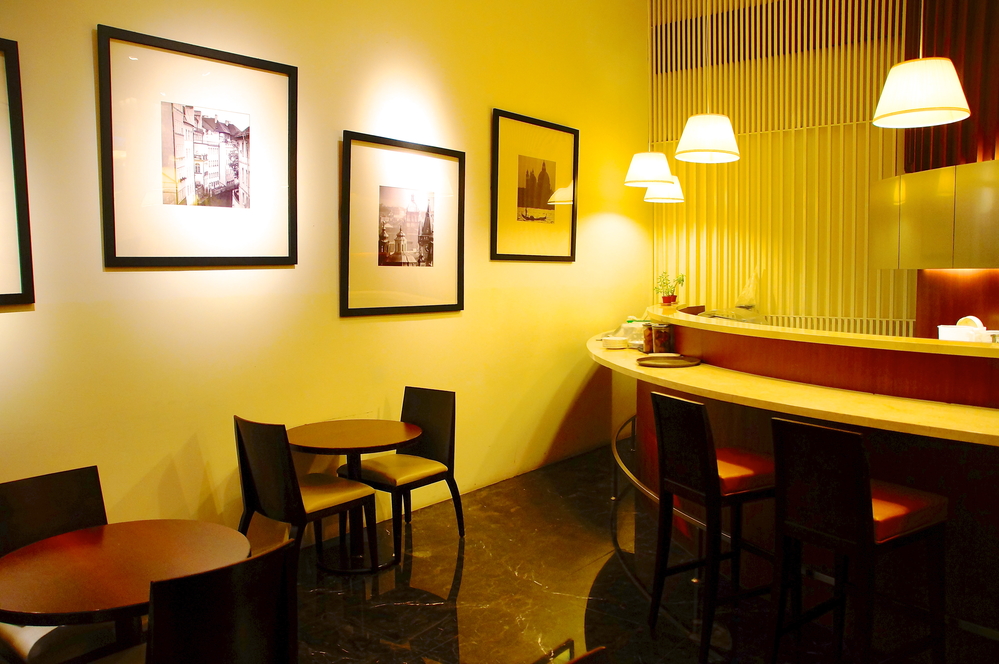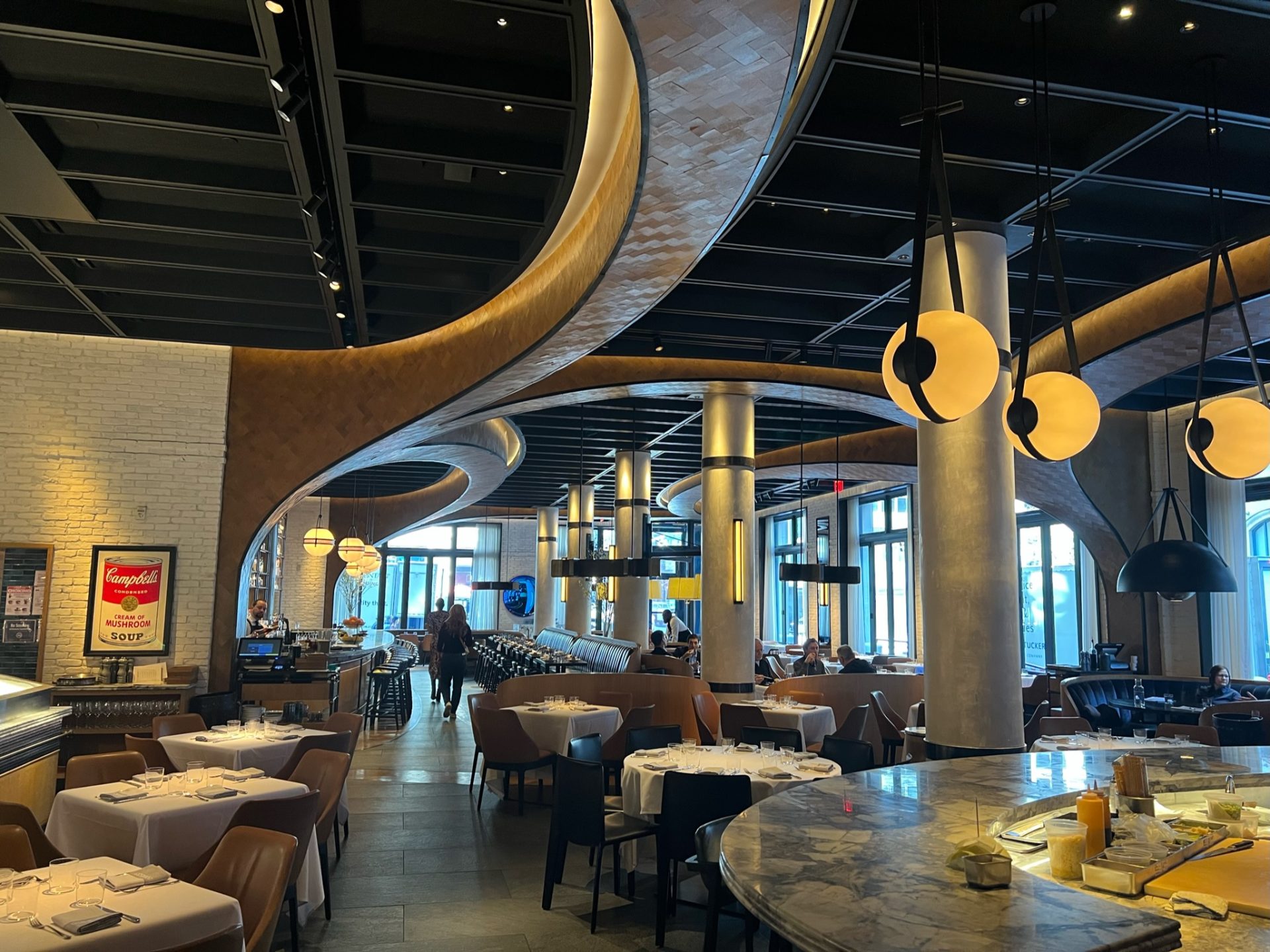Asian Restaurant ISB: A Must-Try Place for Food Lovers in Islamabad
Asian Restaurant ISB: A Must-Try Place for Food Lovers in Islamabad
Blog Article
Savor Authentic Eastern Cuisine With a Pan-Asian Spin for a Cooking Adventure
Beginning on a culinary trip with authentic Eastern food, boosted with a Pan-Asian spin, supplies an one-of-a-kind opportunity to discover the abundant tapestry of tastes that define the area's varied culinary traditions. As you ponder these attracting recipes, consider the social narratives and historical impacts that shape them, each bite offering a story waiting to be uncovered. pan asian restaurant Islamabad.

Exploring Pan-Asian Flavors
In the realm of global gastronomy, Pan-Asian cuisine stands apart for its impressive diversity and the harmonious interaction of tastes from different Eastern cultures. This culinary method celebrates the abundant traditions and distinct components discovered across the continent, creating a tapestry of preferences that is both rewarding and appealing. Trick to Pan-Asian food is its capacity to stabilize different flavors-- pleasant, salty, spicy, and sour-- while highlighting the freshness and top quality of each active ingredient.
From the umami-rich soy sauce of Japan to the fiery chili peppers of Thailand, Pan-Asian food supplies a substantial combination of tastes. These aspects are frequently incorporated in innovative means, boosting meals with layers of complexity. For example, making use of fragrant natural herbs such as lemongrass and cilantro, usual in Vietnamese and Thai cuisine, adds a rejuvenating illumination to dishes, while the consolidation of coconut milk delivers a luscious, abundant structure.
The focus on fresh produce and aromatic seasonings ensures that each dish is not only a feast for the palate however also for the senses. Pan-Asian food invites diners to start a cooking journey, discovering the substantial and varied landscapes of Asian gastronomy with every bite.
Fusion Meals to Try
While Pan-Asian cuisine is commemorated for its standard flavors, the contemporary cooking landscape is progressively embracing blend recipes that blend these classic components with influences from various other areas. This ingenious approach not only honors the abundant heritage of Asian cookeries yet likewise presents unique preference experiences that attract contemporary tastes buds.
A prime instance of such a combination meal is the Korean-Mexican taco, where seasoned bulgogi beef is wrapped in a warm tortilla, topped with kimchi and a hot gochujang-infused salsa. This mix weds the vibrant, savory tastes of Korea with the vibrant, fresh components of Mexican food. Similarly, sushi burritos have gained appeal, integrating the delicate creativity of Japanese sushi with the passionate, hand-held ease of a burrito, usually featuring blend ingredients like tempura shrimp and avocado with a drizzle of wasabi mayo.
Another notable dish is Thai curry ramen, which infuses the velvety, fragrant spices of Thai curry right into the calming broth of traditional Japanese ramen, creating a harmonious blend that tantalizes the senses. These fusion meals prolong beyond mere novelty; they stand for a culinary discussion between societies, motivating exploration and technology worldwide of Pan-Asian cuisine.
Important Active Ingredients and Spices
To genuinely value Pan-Asian food, one must understand the essential components and flavors that create its structure. This diverse culinary design attracts from an abundant tapestry of Eastern customs, using a harmonious mix of structures and flavors. Secret ingredients consist of soy sauce, fish sauce, and oyster sauce, which present a full-flavored umami deepness important to Oriental meals. Corresponding to these are rice vinegar and mirin, offering a fragile acidity and sweet taste.
Aromatic aspects are essential, with garlic, lemongrass, and ginger being ubiquitous throughout numerous Pan-Asian recipes. These ingredients supply an aromatic base that enhances the intricacy of flavors. Flavors such as star anise, cardamom, and cinnamon introduce warmth and personality, resembling influences from areas like China and India.

Cooking Techniques and Tips
Understanding the art of Pan-Asian cuisine calls for experience with its distinctive food preparation strategies, each contributing to the vibrant tapestry of flavors this culinary tradition is commemorated for. Central to these approaches is the stir-fry, a fast food preparation strategy that maintains the dietary integrity and dazzling shades of active ingredients. Making use of a More Bonuses wok, the stir-fry method permits even warmth circulation, vital for achieving the characteristic appearance and flavor balance of Pan-Asian dishes.
One more essential strategy is steaming, specifically common in Chinese food. This gentle technique keeps the natural tastes and nutrients of components, making it excellent for fish and shellfish and veggies. Dumplings, a precious staple, usually take advantage of steaming, resulting in soft, succulent appearances.
Barbecuing, also important, imparts smoky midsts to meals such as Korean bulgogi or Japanese yakitori (Fine dining experience Islamabad). This technique typically entails seasoning components, allowing flavors to permeate deeply prior to Read More Here cooking over an open fire or warmer
Last but not least, grasping the art of balancing flavors-- pleasant, sour, salty, bitter, and umami-- is crucial. Appropriately layering these aspects can elevate a recipe from common to extraordinary, supplying a facility and satisfying culinary experience that personifies the significance of Pan-Asian food.
Eating Experiences Worldwide
Across the world, Pan-Asian cuisine supplies an unmatched dining experience, celebrated for its abundant tapestry of flavors and vivid discussions. This culinary sensation has actually gone beyond social borders, catching the hearts and palates of food lovers worldwide. In cosmopolitan cities fresh York, London, and Sydney, Pan-Asian dining establishments act as fusions where culinary customs from Thailand, Japan, China, and beyond merge, supplying restaurants with an eclectic mix of meals that highlight the area's diversity.
The global allure of Pan-Asian food depends on its ability to offer both credibility and advancement. Cooks masterfully wed standard active ingredients such as lemongrass, soy sauce, and miso with contemporary methods, causing meals that are both acquainted and refreshingly new. This combination permits restaurants to begin on a cooking trip that respects heritage while accepting modernity.
In addition, eating experiences are elevated through attentively developed environments that reflect the ethos of Pan-Asian aesthetic appeals. From minimal Japanese-inspired interiors to lively Thai-themed rooms, each restaurant offers an one-of-a-kind atmosphere that matches the cooking offerings. As an outcome, patrons are not simply eating a meal however partaking in a social experience, making Pan-Asian dining a really global phenomenon.
Verdict
The expedition of Pan-Asian cuisine provides a profound understanding of the detailed interplay of tastes and culinary customs across Asia. By accepting combination meals such as Thai curry ramen and sushi burritos, the cooking journey not only highlights the versatility of conventional components yet additionally showcases innovative contemporary techniques. This gastronomic description adventure, enhanced by crucial seasonings and cooking methods, provides a special chance to value the cultural variety and culinary creativity that specify Pan-Asian cuisine on a worldwide scale.
Beginning on a cooking journey through authentic Asian cuisine, boosted with a Pan-Asian spin, provides an unique opportunity to explore the abundant tapestry of tastes that define the area's varied cooking practices.In the world of global gastronomy, Pan-Asian cuisine stands out for its exceptional variety and the unified interplay of tastes from different Asian cultures. Key to Pan-Asian cuisine is its ability to stabilize contrasting flavors-- pleasant, salted, spicy, and sour-- while highlighting the quality and high quality of each ingredient.

Report this page